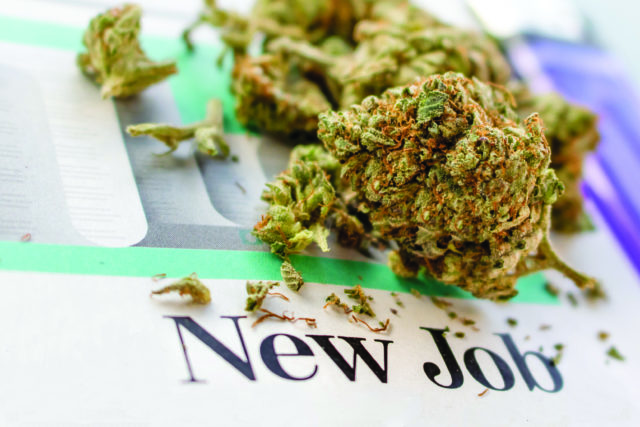
When Colorado legalized cannabis, there were a lot of skeptics who feared the state’s workforce was about to become lazy and unmotivated. It was a social experiment, and one that was actually about to affect labor supply and labor demand in this state—just not in the way those skeptics expected.
“When there is a new industry coming up in a region, there are bound to be developments in other [economic] aspects as well,” says Avinandan Chakraborty. “I was interested in the labor markets.”
Chakraborty is a Ph.D student in the University of New Mexico’s Economics Department. He authored a field paper in 2020 titled “The Effects of Recreational Cannabis Access on the Labor Market: Evidence from Colorado” that sought to determine how the introduction of legal cannabis affects an area’s available jobs and workforce. Since not all of Colorado’s counties opened their doors to legal cannabis at once, he saw an opportunity to explore this topic in real time.
“I was really uncertain about what the results would be,” Chakraborty says, “because past studies [of cannabis on labor markets] showed both positive and negative effects.”
He says the older studies typically found more adverse and negative effects, suggesting cannabis was bad for labor supply and demand, while newer studies with more up-to-date data showed more positive results.
“This is an interesting study because there are few counties that haven’t legalized cannabis as there is a stereotype that cannabis is bad,” Chakraborty says. “[Colorado] is a great place to do this research . . . because there is data available.”
For his study Chakraborty and his team assembled data on labor market outcomes, recreational access, and county characteristics from all of Colorado’s 64 counties. They then used a “Differences-in-Differences” model to estimate the impact a recreational dispensary had on variables of entry. Counties with recreational dispensaries were the “treatment group” while counties that never allowed for recreational cannabis sales were the “comparison group,” Chakraborty explains.
What they found flies in the face of those negative stereotypes: According to the study’s results, labor markets show a “tightening” effect, driven by more abundant employment opportunities. In counties that legalized cannabis they saw a 0.7 percent decrease in unemployment rates. They also found a 4.5 percent increase in the overall number of employees, specifically in cannabis manufacturing and service jobs. That’s because the introduction of legal cannabis brought with it jobs at every link in the cannabis supply chain—from cultivation to retail and management.
“Given the lack of a reduction in labor force participation or wages, negative effects on labor supply are likely limited,” the study’s abstract reads. “The decrease in the unemployment rate, coupled with an increase in the number of employees, indicates that labor demand effects are likely to dominate.”
Essentially, the introduction of legal cannabis created more jobs (labor demand) and resulted in more employed individuals (labor supply), lowering unemployment rates. It was good for everyone overall—like a green tide rising, lifting all ships.
That’s at the county level, Chakraboorty cautions. Whether the same pattern holds true at the state or national level is a question that remains to be answered—and one Chakraborty hopes to explore in follow-up studies. The data he looked at was from 2011-2018 (after cannabis was first legalized in this state) and he thinks that more up-to-date data could provide different (more accurate) observations.
“The results will be, I think, smaller than before because there is competition coming along in this market right now,” he says. “So it will be a great [follow-up] study to see how different states and neighboring states [respond to] the legalization of cannabis. How does that affect the [labor market] effects we’re looking at?”
Either way, Chakraborty says, this preliminary research is promising for cannabis legalization. Chakraborty contends that it’s important information for lawmakers interested in creating jobs and decreasing unemployment, and for voters who want greater prosperity in their community.
“[Policy makers] should know this before legalizing or not legalizing [cannabis],” Chakraborty says. “They should definitely look at the positive side that this new industry coming along is having.”














